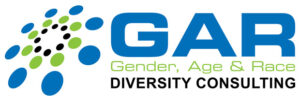Thought Leadership
Listen to Dr. Adams discuss Death by Diversity Initiatives & The Myth of Meritocracy on the Inflection Point podcast with Lauren Schiller.
PODCAST HERE ►
Your Disability Should Not Keep You from the Job of Your Dreams
 Special thanks for this post from guest blogger Patrick Young http://ableusa.info
Special thanks for this post from guest blogger Patrick Young http://ableusa.info
Advancements in technology are making it possible for workers with disabilities to thrive in the workplace by providing them with the necessary tools to overcome their limitations. There is also a growing recognition that diversity and inclusion are critical elements of a successful work environment. As a result, people with sensory or motor impairments are increasingly assuming important and productive roles in today’s business world.
If you are disabled, do not let it stop you from earning a degree, getting a job, or starting your own business at home. Dr. Barbara Adams offers the following tips to help you achieve your goals.
Use Technology to Assist You
Most people in today’s workforce use technology to help them get tasks done more quickly and efficiently. However, if you have a disability, it can do much more than that. By helping you perform a task that might otherwise be impossible, assistive technology can knock down existing barriers and pave the way for your success. Some promising innovations are:
- Screen readers and magnifiers
- Smart glasses equipped with a camera, microphone and speaker
- Voice recognition software
- Transcription software for smartphones or tablets
- Apps that can distinguish colors and currency denominations
Open Doors with an Online Degree
Many jobs require a college degree. For example, if you want to work in the information technology field, a computer science degree certainly helps. If you are thinking of becoming an accountant, majoring in math, finance or economics can improve your odds of successfully getting a CPA license. Similarly, if you are interested in becoming a journalist, you should aim to get a degree in communications or English. Whatever field you choose, earning a higher education degree is a great first step forward.
You may wonder if the path to a degree is more difficult for students with disabilities. However, Teach Thought notes recent improvements in the adaptive technology sector are removing barriers, and colleges are providing students with the help they need to succeed.
Online colleges are especially well suited for disabled students. Learning from your accessible home automatically removes many of the physical limitations you might encounter at an in-person college. Online schools can also provide adaptive devices and special software programs to assist with the learning process.
Most schools offer course materials in alternative formats to better meet the needs of each individual student. For example, a blind student could receive audio recordings of course materials and use software that can describe graphics, charts and illustrations, and even use an app to enable translation into braille. Similarly, a person who is deaf or hard of hearing can receive a written transcript for each lecture as well as real-time closed captioning for online videos.
Find Employment with Successful Companies
Adaptive technology is making it easier for people with disabilities to get a job. Also, companies are learning the advantages of including people with physical limitations in their workforce. These businesses are shown to have higher revenue and twice the net income than less-inclusive companies. Not only does hiring people with disabilities enlarge the company’s talent pool and help them meet their employment needs, but it also increases workforce diversity and creates an environment of inclusion.
Take Advantage of Home-Based Employment
More people than ever before are using their home as their office. Per Inc File, recent statistics show that 38 million businesses in the U.S. are home-based, and the trend seems to be growing. The factors fueling the trend include increased convenience, decreased expenditures and expanded autonomy. The advantages are especially compelling for people with disabilities. If you face motor or sensory limitations, you may benefit from eliminating your commute and working from the comfort of your accessible home.
Individuals with disabilities are being offered more employment opportunities, and in turn, are proving to be a productive and essential part of the workforce. This trend promises to gain even more steam as opportunities for remote work and learning continue to increase, and the field of assistive technology continues to grow and evolve.
So you hired a sexist. Now what?
Next steps for Google and the rest of the tech industry.
The equally disturbing fallout from the ex-Google employee’s memo offering biological differences as reasons why women are less represented in tech than men is the support he says he received from other Googlers. If this is true, an unknown number of people who support his misguided and discriminatory views remain in the firm. And probably in lots of other tech companies, too. It wasn’t long ago that some Facebook employees erased Black Lives Matter in favor of All Lives Matter – missing the point entirely. Sexism and racism are alive and well in the place that purports to value difference, be different, and think different.
Google famously hires less than 1% of all applicants and competes with other tech titans to hire only the “best” talent for each job. And the industry as a whole is plagued by their ongoing challenge of developing more diverse, equitable, inclusive (DEI) workplaces.
I’ve had a few days to digest the plethora of responses to James Damore’s memo, reading views from multiple perspectives, and analyzing scholarly research. In the spirit of helpfulness, and as an organizational psychologist experienced in DEI, I’m here to offer a few suggestions:
- Remind your employees that free speech means the government cannot arrest you for saying whatever you like (and even the 1st Amendment has caveats and limitations). It does not mean that you are free to disparage, write or say whatever you like at work, without consequence. Company policies apply. Company values matter, too. Employees must know and understand them.
- An over focus on unconscious biases to address the underrepresentation of women and minorities is insufficient to drive real change. Biases are malleable and should be surfaced and worked, but people cannot be shamed into change. Meaningful dialogue and education are imperative. Many people, particularly those from privileged backgrounds, have little knowledge of and even less experience with structural inequities. Share a framework to get people thinking about differences. Guide employees in the process of self-discovery. Start by having them write their brief bio. Include questions like:
As a child, what were you taught to believe about how to treat others?
What were you taught about people who did not share your family’s beliefs? How connected were you to your community (school, town, place of religious worship, cultural groups)?
How has race, class, or gender influenced your life in terms of what you believe you could accomplish?
Note differences among people, or the lack thereof. Build awareness and appreciation for others. - Educate yourself about what is required to have bold, inclusive conversations about race, religion, politics and other topics. Begin by reading We Can’t Talk About That at Work! by Mary-Frances Winters (Berrett-Koehler Publishers, Inc. 2017).
- Change your recruiting process. Take advice from the late Steve Jobs and hire more people from the humanities. Measure EQ of potential hires. SAT scores and IQs are not correlated with success on the job, but Emotional Quotients (EQs) are.[1] Hire holistically. The ex-Google memo writer James Damore is skilled in the so-called hard sciences but knows little if anything about historical, structural inequalities. Ask interview question such as:
Give me some examples of how you have supported diversity, equity and inclusion in your previous job/community/etc.
What is more important to you: valuing differences among people or valuing commonalities among people? Why?
Tell me about a time when you had to manage conflict in a multi-cultural group?
“What we permit, we promote,” the saying goes, so kudos to Google for sacking the offending memo writer. The time is optimal for tech leaders to address employees who lament that bringing in diverse hires means “lowering the bar.” Hiring women, people of color, or disabled people is not charity work and the belief that applicants of different backgrounds are somehow “lesser” people, smacks of prejudice. Also, the presumption that there is an actual, objective, predefined bar against which to measure candidates is bunk. Hiring is far more subjective than scientific. Interviewees get rejected for the ill-defined “culture fit” all the time. A candidate declined by one company often makes an excellent hire by another. The so-call “bar” and who clears it says more about the company and hiring managers than it does about the candidates applying for a given role. Inclusive leaders must model appreciate inquiry (a change management approach that focuses on identifying what works well and doing more of it – versus focusing on problem-solving) and show employees how to shift thinking from looking at what’s missing on a resume to looking at all the assets the candidate brings to bear.
So there you have it. Plenty of work to do. Down with hiring sexists, racists, and their ilk. Up with hiring a diverse workforce and building inclusive work environments.
Need help? I’m here.
 Barbara B. Adams, PsyD
Barbara B. Adams, PsyD
Dr. Adams is the Founder of GAR (Gender, Age, and Race) Diversity Consulting, based in the San Francisco Bay Area. She is an expert in organizational development and has a great passion for workforce diversity and inclusion. She consults with technology, healthcare, educational services and government clients throughout the United States, Europe, and Australia.
She is a former director in the National Diversity & Inclusion Office at Kaiser Permanente (KP), ranked #1 in the 2016 DiversityInc Top 50 survey. Before KP, Dr. Adams worked for ten years as a global management and technology consultant. She holds a Doctorate of Psychology degree in Organization Development.
Dr. Adams is the author of the forthcoming book: Women, Minorities, and Other Extraordinary People: The New Path to Workforce Diversity. She has been featured in The Sacramento Bee; SiliconValley.com; WallStreetSelect; Miami Herald; MercuryNews.com; and SignOn San Diego. She resides with her family in Northern California. Contact her at www.drbarbadams.com
[1] Colfax, R., Rivera, J., Perez, K. (2010). Applying Emotional Intelligence (EQ-I) in the Workplace: Vital to Global Business Success. Journal of International Business Research, (1) suppl. Special Issue 1, pp. 89-98.
Diversity and Inclusion in the Workplace
 A telling finding from Intel’s recent announcement about the results of their diversity and inclusion workplace efforts is not found in the number of women or minority candidates hired. Rather, it’s the number who have left the firm. The exit rate of African-American employees exceeds the rest of the staff. For your consideration: in the past year 209 African-Americans were hired, and 201 left; 11 Native Americans were hired, and 19 left. Why? A sense of not belonging, downsizing, limited growth opportunities, and less-than-welcoming work environments are just a few reasons.
A telling finding from Intel’s recent announcement about the results of their diversity and inclusion workplace efforts is not found in the number of women or minority candidates hired. Rather, it’s the number who have left the firm. The exit rate of African-American employees exceeds the rest of the staff. For your consideration: in the past year 209 African-Americans were hired, and 201 left; 11 Native Americans were hired, and 19 left. Why? A sense of not belonging, downsizing, limited growth opportunities, and less-than-welcoming work environments are just a few reasons.
Don’t misunderstand me. Intel has rolled out much commendable diversity and inclusion workplace initiatives, as have Airbnb and others. But the identification, recruitment and hiring of women and underrepresented minorities are negated when people don’t stay with the organization. The collective industry approach to this challenge needs a fundamental re-thinking.
I’ll offer a few thoughts:
The lack of diversity in technology and other industries today has not been eradicated by 50-years of laws, policies, regulations, or education and training programs. Company heads who operate on false beliefs that initiatives will solve the problem ignore the systemic change and leadership required for long term success. Initiatives address symptoms, and may provide short-term relief to issues of diversity. Initiatives will always be insufficient, because they do not address root causes.
What’s behind the current state of diversity and inclusion in the workplace?
- Systems and policies in most large companies hinder the ability of an organization to become inclusive.
- When individual employees do not possess belief systems that work inclusively, then a diverse, inclusive workplace can never develop.
The provocation is, to change the nature of employee and leadership development so that the company will change. Individual and collective thought processes need to expand for organizational systems and policies to change. In this way, a company’s diversity and inclusion results improve in meaningful and sustainable ways. It is not possible for this to work in any other order – there are 50 years of proof. Fixing #2 will enable the fixing of #1, if leaders are brave enough to go there. Changing belief systems is not easy, but it is possible.
I’ve offered a smattering of my thinking on this topic. But what I’d really love to hear are your thoughts. Will you share?
Reference: http://www.intel.com/content/www/us/en/diversity/diversity-in-technology-report.html
